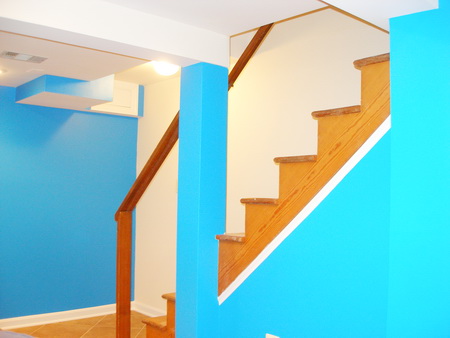
Discussion of Design, Color Matching, and Spectrophotometry from a Northern Virginia Painting Contractor
Color is an amazing, and elusive, element of life. Our vision doesn’t necessarily depend on it, and in some ways the information it brings us is superficial: it doesn’t tell us about more than the surface of an object. Yet a world without color is undeniably lacking something, and even people who are relatively ambivalent about color are affected by it.
So the process of choosing the colors that you are going to paint your interior – essentially, the colors that you are going to live among – is one that merits serious consideration. There is much to say about interior design and color matching; how to come up with a color scheme from scratch, how to predict how your colors will look when applied to a large architectural surface, etc. But here we are going to focus on the art and technology of what to do when you start your project already knowing what colors you want.
There are three steps to getting your paint to turn out the perfect color. The first step is to get a physical color sample. The next step is to adjust that color sample so that it is perfectly suited for its intended project. The final step is to use a spectrophotometer to create paint that will turn out that color.
Steps one and two provide the greatest challenge if you are trying to match a color from a natural landscape (i.e., the “color the sky is right now”). Visual artists are well aware that the play of light and color in a natural landscape involves a huge array of hues, tones, and contrast, that can be depicted a variety of ways. The blue of a sky in nature is luminescent – it is actually emitting light – and so translating it into an opaque color involves a substantial challenge. It is also subtly and infinitely variable, so using one paint color to mimic it will likely fall flat. In landscape paintings, artists use startling color juxtapositions – like throwing yellow into a blue sky – to achieve the desired results – but in interior design you have to achieve the effect you want a lot more simply.
So when you pick your color, you want to have your whole composition in mind, and you also want to consider, as always with picking architectural paint colors, how intense or overwhelming the colors will look if applied to large surfaces. With colors from nature, this might take some adjustment. Take a picture of the sky, get the photo printed, and then put it up on the wall and imagine how it will look when painted over the whole surface and when put together with your trim, accent, and furniture colors. Trust your instincts: it may actually be a few shades lighter or grayer that you are truly looking for.
Next, you need to bring your color sample – along with any adjustments you might want to make to it – into a paint store. Walk past the showroom area, past the hardware store, and go up to the service counter in the back. Somewhere near the service counter, there should be a computer plugged into a small, shoebox-sized machine. (Hopefully, there will also be a person back there who knows how to operate it!). The machine is called a spectrophotometer, and what it does is analyze the color of whatever physical sample you submit to it and come up with a pigment formula for mixing that paint color. The paint store employee can then take that code and plug it into their paint mixer, creating a bucket of paint in that color.
The spectrophotometer works by bouncing white light off of your sample and onto a light-sensitive detector, which analyzes the spectrum of reflected light and sends that information to the computer. This method is roughly 90% effective; sometimes the color will be slightly off. This is especially true when working from photos or magazines, which sometimes allow light through or have colors behind that bleed, when working with an extremely small sample (you want it to be at least the size of a quarter), or working with metallic colors. So it is important to check your paint when you are finished to make sure you’ve come up with the right color. Also, if you want to have the color be several shades lighter, darker, grayer, etc., than your sample, tell the store clerk before the paint gets mixed. It is a wise idea to initially mix a small amount of paint, which you can take home and test on your surface, before committing to the full amount.